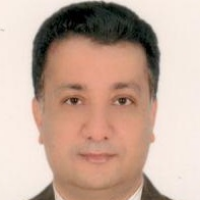Spatial Modelling of Malaria in South of Iran in Line with the Implementation of the Malaria Elimination Program: A Bayesian Poisson-Gamma Random Field Model
Malaria is the third most important infectious disease in the world. WHO propose programs for control ling and elimination of the disease. Malaria elimination program has begun in first phase in Iran from 2010. Climate factors play an important role in transmission and occurrence of malaria infection. The main goal is to investigate the spatial distribution of incidence of malaria during April 2011 to March 2018 in Hormozgan Province and its association with climate covariates.
The data included 882 confirmed cases gathered from CDC in Hormozgan University of Medical Sciences. A Poisson-Gamma Random field model with Bayesian approach was used for modeling the data and produces the smoothed standardized incidence rate (SIR).
The SIR for malaria ranged from 0 (Abu Musa and Haji Abad districts) to 280.57 (Bandar–e-Jask). Based on model, temperature (RR= 2.29; 95% credible interval: (1.92–2.78)) and humidity (RR= 1.04; 95% credible interval: (1.03–1.06)) had positive effect on malaria incidence, but rainfall (RR= 0.92; 95% credible interval: (0.90–0.95)) had negative impact. Also, smoothed map represent hot spots in the east of the province and in Qeshm Island.
Based on the analysis of the study results, it was found that the ecological conditions of the region (tem perature, humidity and rainfall) and population displacement play an important role in the incidence of malaria. There fore, the malaria surveillance system should continue to be active in the region, focusing on high-risk areas of malaria.
-
Evaluation of students' knowledge, attitude, and performance towards research in the health faculty of Hormozgan University of Medical Sciences in 2022
Somayyeh Dehghani *, Abdol Rahim Biojmajd, Batool Kazemi Siahouee, Mohadeseh Balvardi, , Amirali Ilpour, Mohammad Hashemzadeh
Journal of Environmental Science Studies, -
Association between short-term exposure to high-level particulate matter (PM1, PM2.5, and PM10) of smoke Peganum harmala seeds with blood pressure: A quasi-experimental study
Yadolah Fakhri*, Ibrahim Ziad Abdullah, Ayham Issam Qasem Al-Issa, Elham Rahmanzadeh, Somayeh Hoseinvandtabar, Somayyeh Dehghani, Mahdi Ghorbanian,
Environmental Health Engineering and Management Journal, Autumn 2024 -
Absence of Asymptomatic Malaria Reservoirs in an Area with a Previous History of Local Malaria Transmission: A Successful Experience in Line with the Malaria Elimination Program in Iran
Zainab Hosseini, Kourosh Azizi, Mohsen Moghadami, Mehdi Hassaniazad, Reza Shafiei,
Journal of Arthropod-Borne Diseases, Jun 2023 -
Molecular Epidemiology of Blastocystis spp. Isolates in Bandar Abbas, South of Iran
Zahra Rajaei, Abbas Farahani, , Saeed Shoja, , Hamed Kamali, Jebreil Shamseddin*
Iranian Journal of Medical Microbiology,



